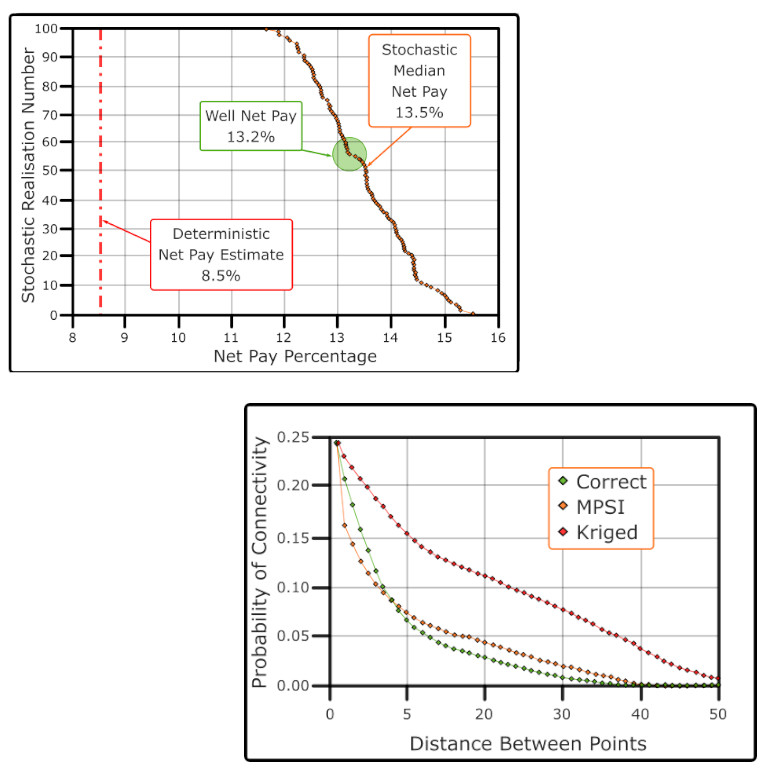MPSI UltraFast stochastic inversion scheme is a joint venture project ARK CLS and Wessex Geoscience. It is considered the fastest stochastic seismic inversion scheme currently available.
Product overview
- Full bandwidth model based on seismic inversion technology
- Low cost, no fuss unlike most stochastic inversion algorithms which are slow, expensive or both
- Available as an OpendTect plugin
- Rapid, robust, inexpensive
Product description
These ARK CLS / Wessex Geoscience OpendTect plugins are collectively called Multi-Point Stochastic Inversion (MPSI) and include deterministic and UltraFast stochastic seismic inversion.
Method
- A 3D broadband impedance model of the sub-surface is constructed using well and picked seismic horizon data.
- Geostatistical gridding (kriging) is constrained by 3D anisotropic variograms.
- A 2D error grid used to provide spatial variation in the constraints used in the subsequent seismic inversion.
- The relative importance of the seismic data and the model in the inversion is specified. This allows the model to take priority close to the wells (where the impedance is known) and to relax the model constraint and use more seismic information away from the wells.
Deterministic Inversion
The objective is to estimate the unique mean or average impedance, based on least squares linear inversion.
Stochastic Inversion
The goal is to estimate a set of realisations of impedance representing the uncertainty in the seismic inversion. The impedance realisations from stochastic inversion can then be used to estimate the uncertainty in reservoir properties such as lithology or porosity in the form of probability maps and volumetric uncertainty.
Other Features
Using a comprehensive suite of utilities the stochastic realisations can also be used to estimate reservoir connectivity and associated connected or swept volume uncertainty.

